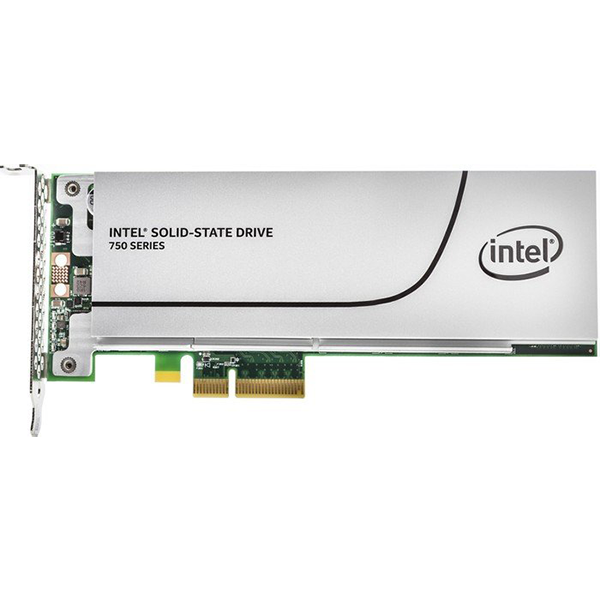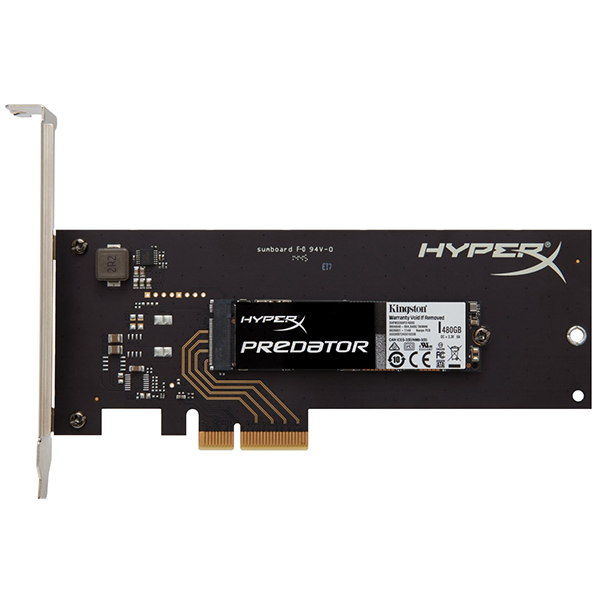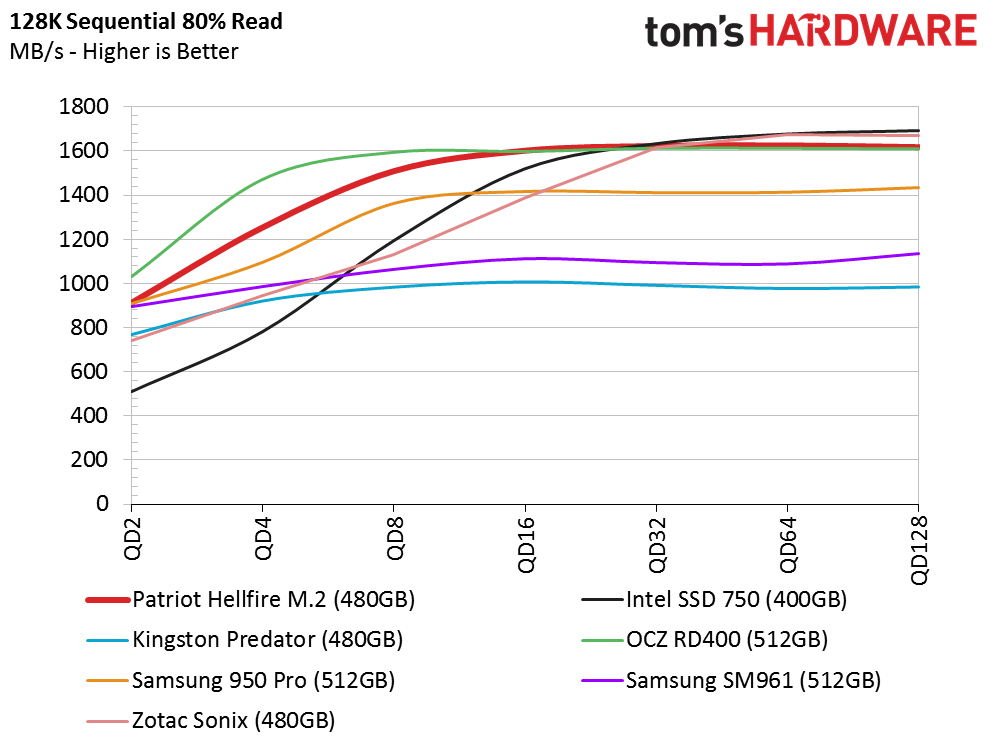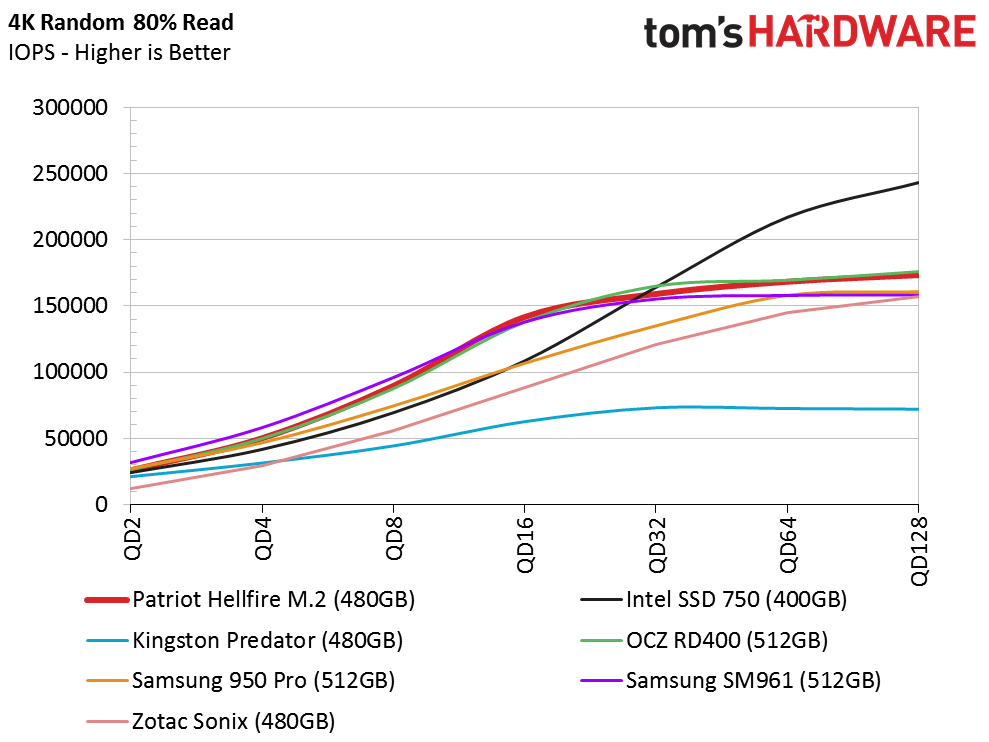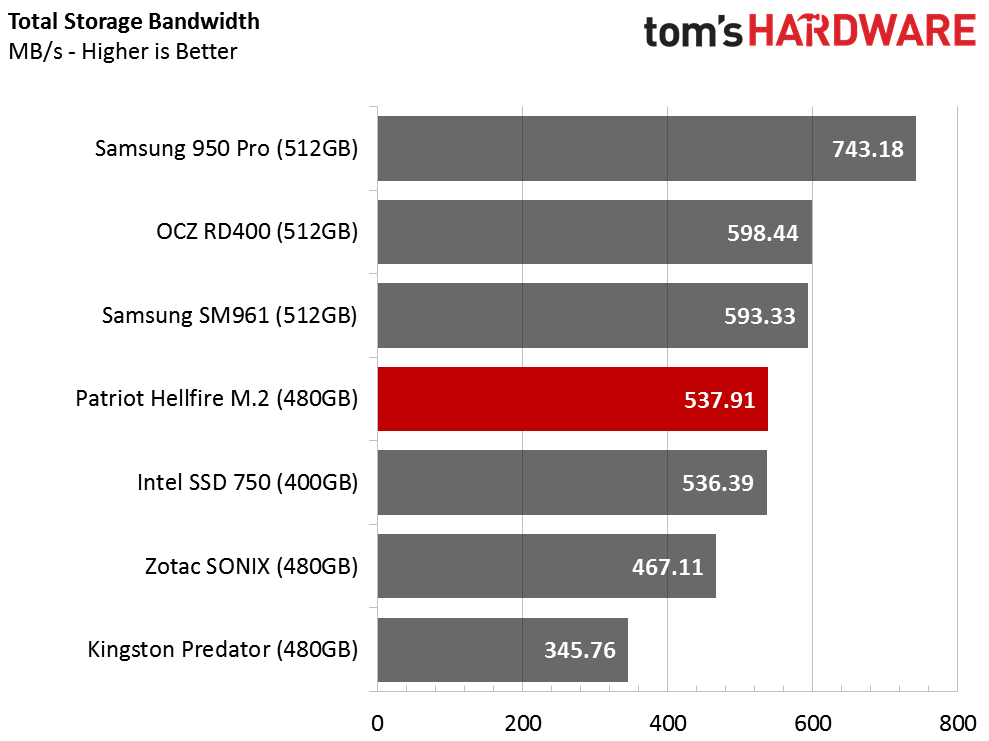Patriot Hellfire M.2 NVMe SSD Review
Why you can trust Tom's Hardware
Comparisons & Performance
Comparison Products
NVMe and the M.2 form factor have become common, at least as items available for sale. Their high cost has stifled adoption for all but the enthusiast users that are willing to spend more to gain access to the ultra-low latency technology. The Intel SSD 740 400GB and Zotac Sonix 480GB are the only M.2 SSDs in our test pool, whereas the rest use the M.2 form factor. Every product in our test pool takes advantage of the NVMe protocol except the Kingston Predator (480GB).
Two Samsung products make an appearance, but they come from different divisions. The Samsung 950 Pro is a retail product with retail availability. The new Samsung SM961 comes from the SSI group and targets large OEM customers like Dell and Lenovo. Some of these products make their way to distributors and onto the gray market, so they serve as a relevant comparison point.
Sequential Read Performance
To read about our storage tests in-depth, please check out How We Test HDDs And SSDs. Four-corner testing is covered on page six of our How We Test guide.
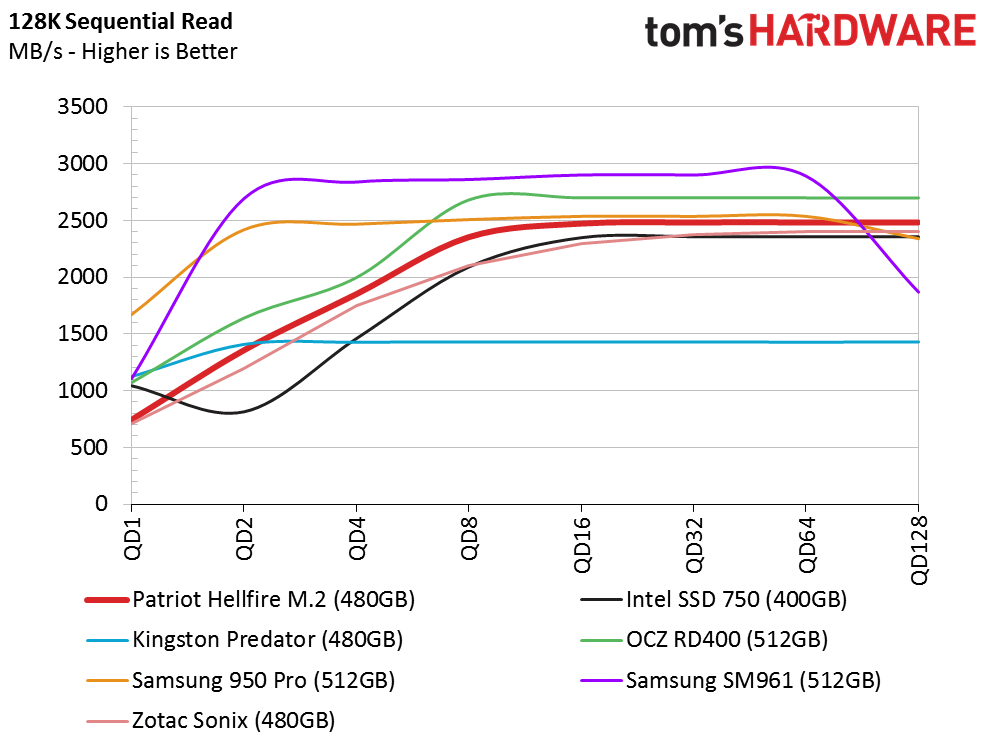
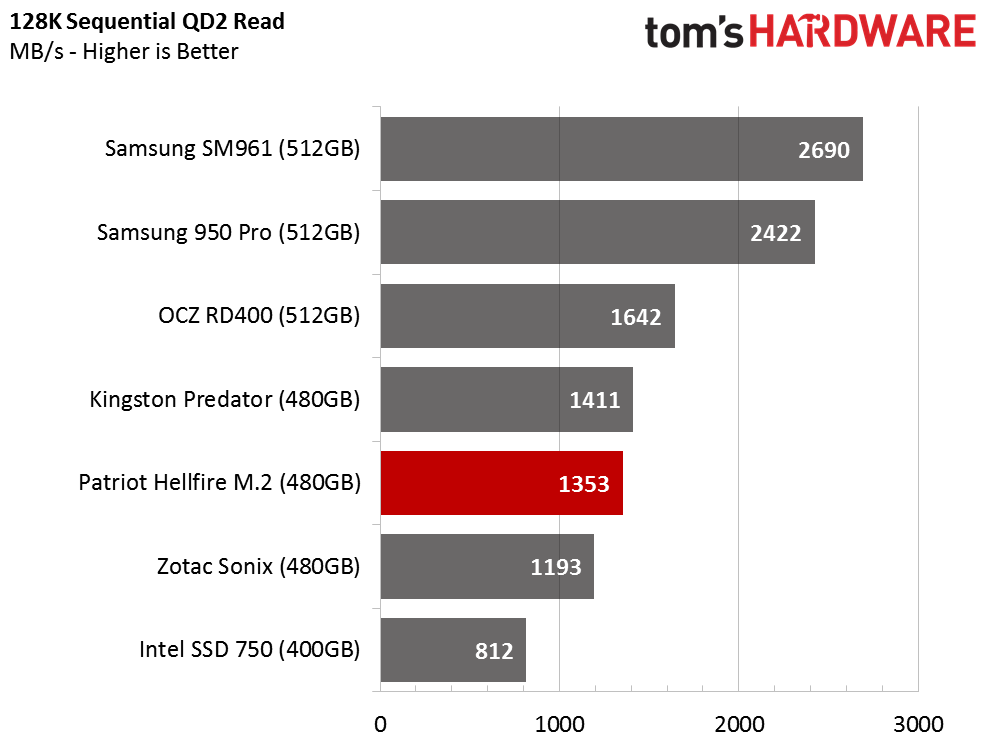
The E7's sequential read performance has increased slightly over the Zotac Sonix we tested a few months ago. Still, the Hellfire with its Phison E7 trails the other products in QD1 sequential read performance. The drive provides a peak performance of 2500 MB/s with a single worker at QD8.
Sequential Write Performance

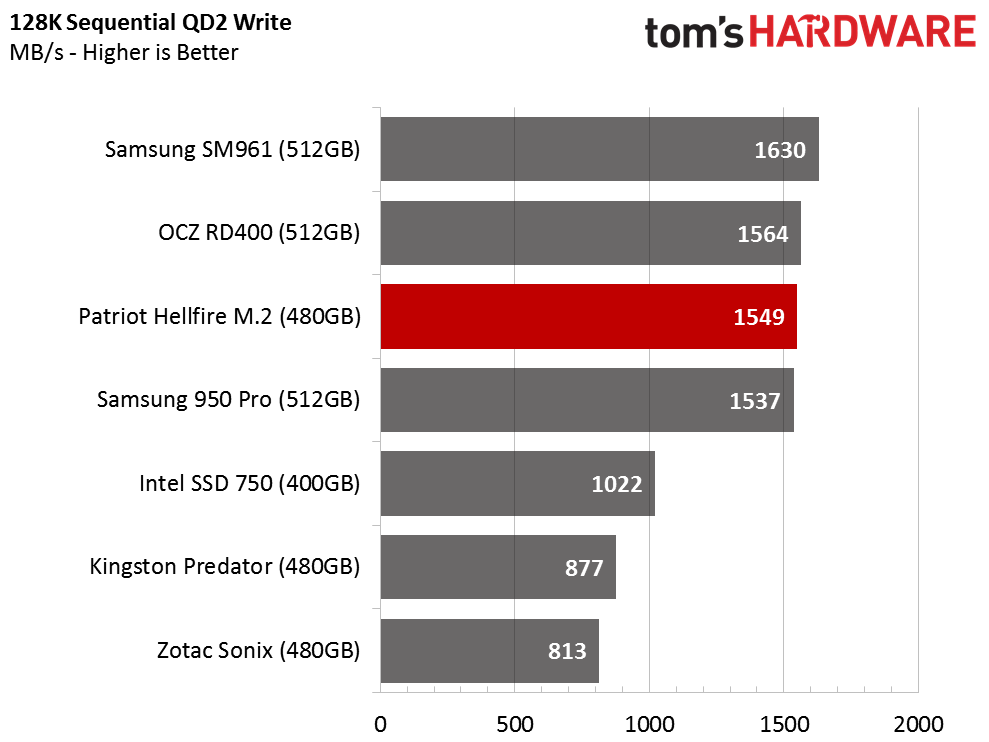
Like many of the other NVMe SSDs, the Hellfire M.2 doesn't scale with increased queue depth during sequential write tests. You can count on roughly 1,500 MB/s of sequential write performance with the 480GB Hellfire. The throughput may seem excessive now, but 10-gigabit Ethernet (GbE) should become more prevalent in the home early next year. 10GbE will give users roughly 1,000 MB/s of throughput, and users will need high-speed storage to make use of the increased bandwidth.
Random Read Performance
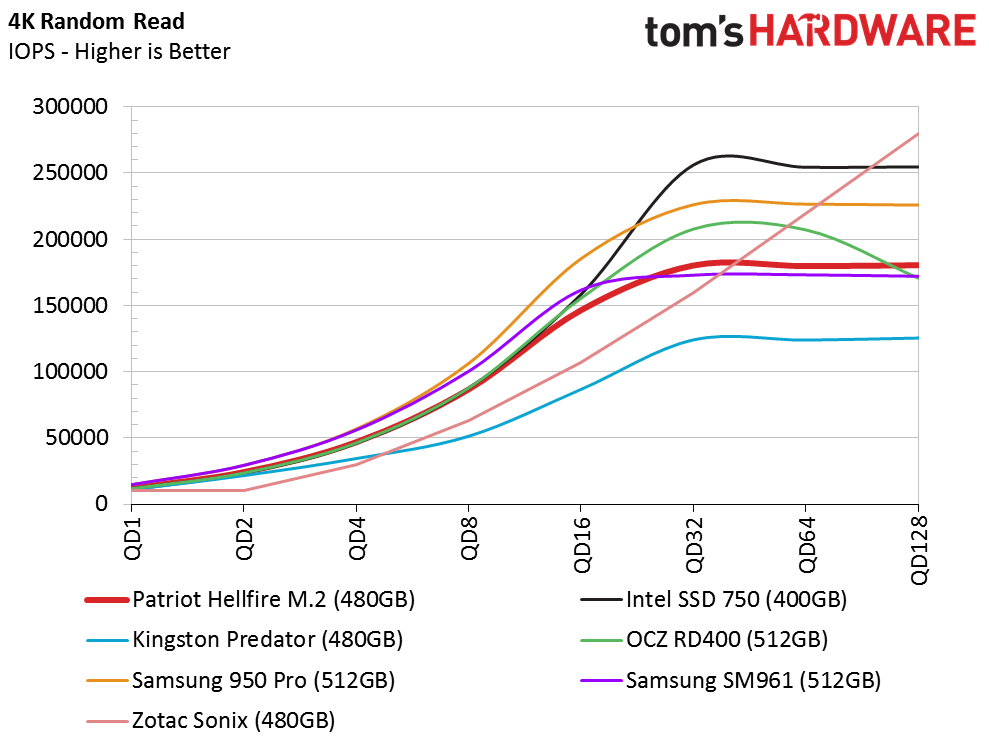
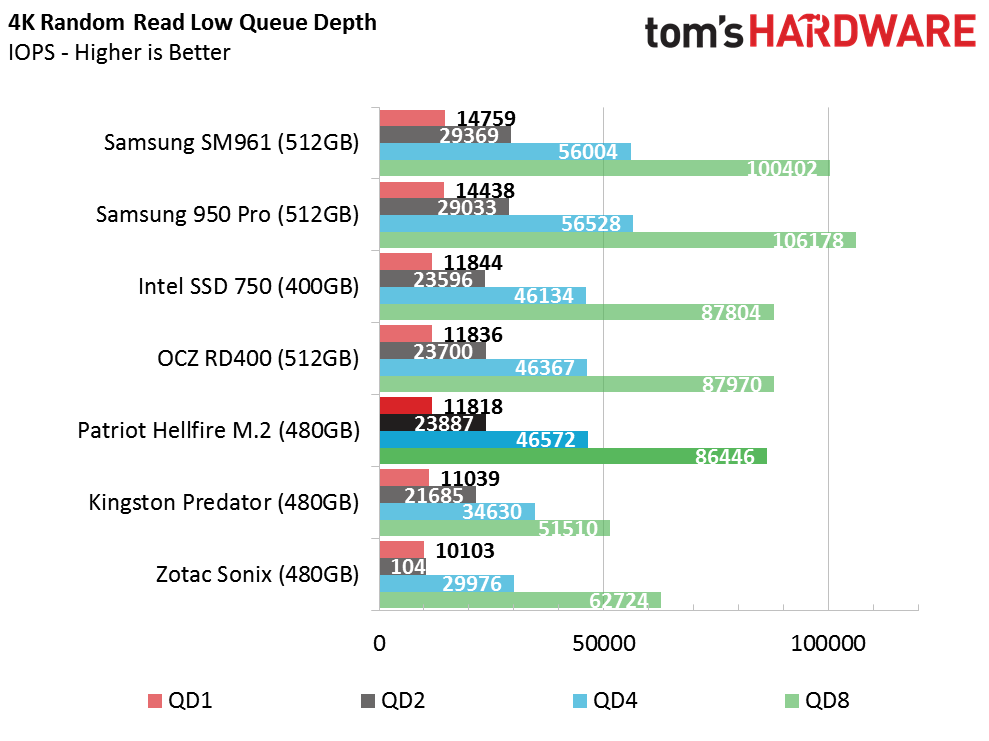
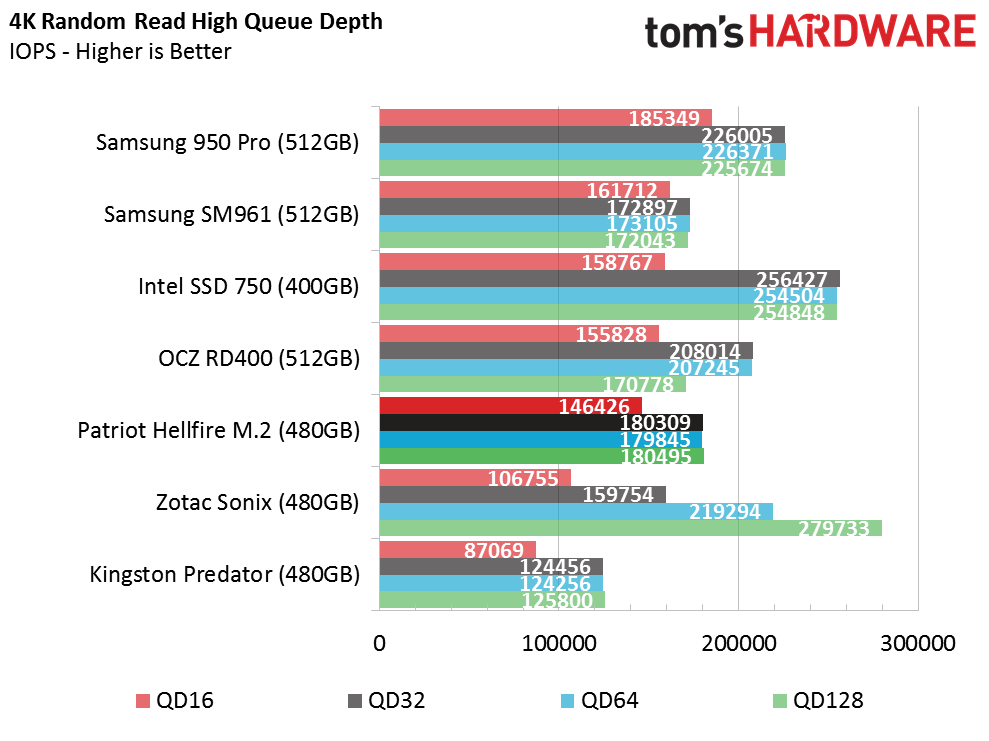
Phison controllers have always had a difficult time with random read workloads. This tendency dates back to the early SATA parts released many years ago. It is also a prime focus for future products and firmware updates. The Hellfire with the latest E7 firmware has much better performance than the Zotac Sonix, which came to market with release candidate firmware. The Hellfire still doesn't deliver the same performance that Samsung manages to achieve, but is hot on the heels of the Intel SSD 750 400GB at low queue depths.
Random Write Performance
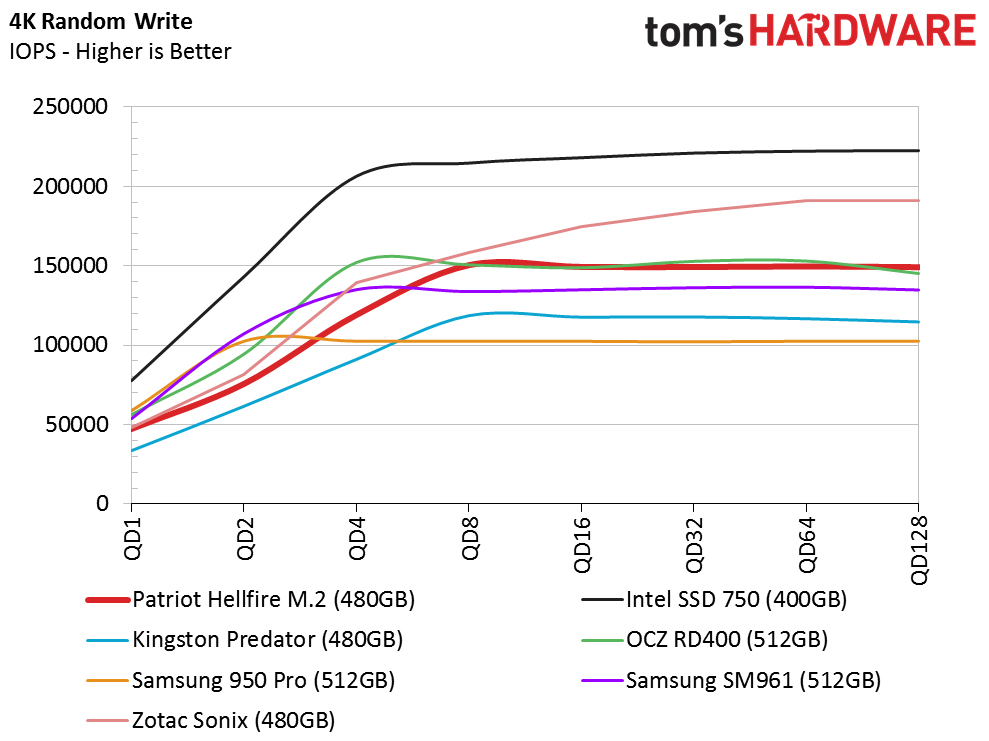
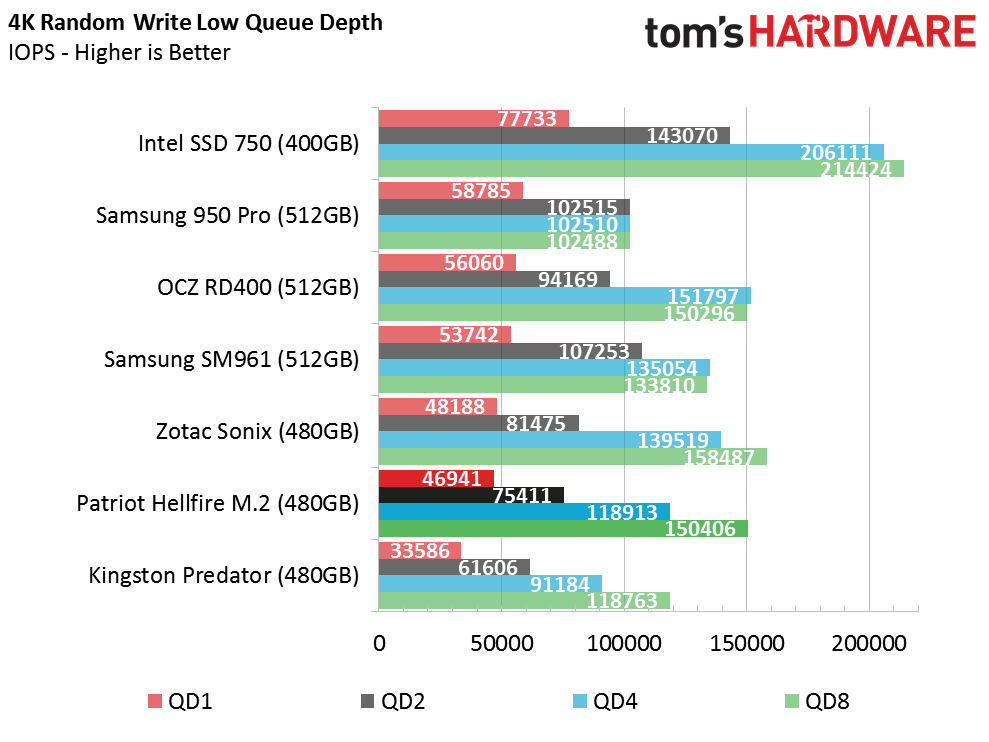
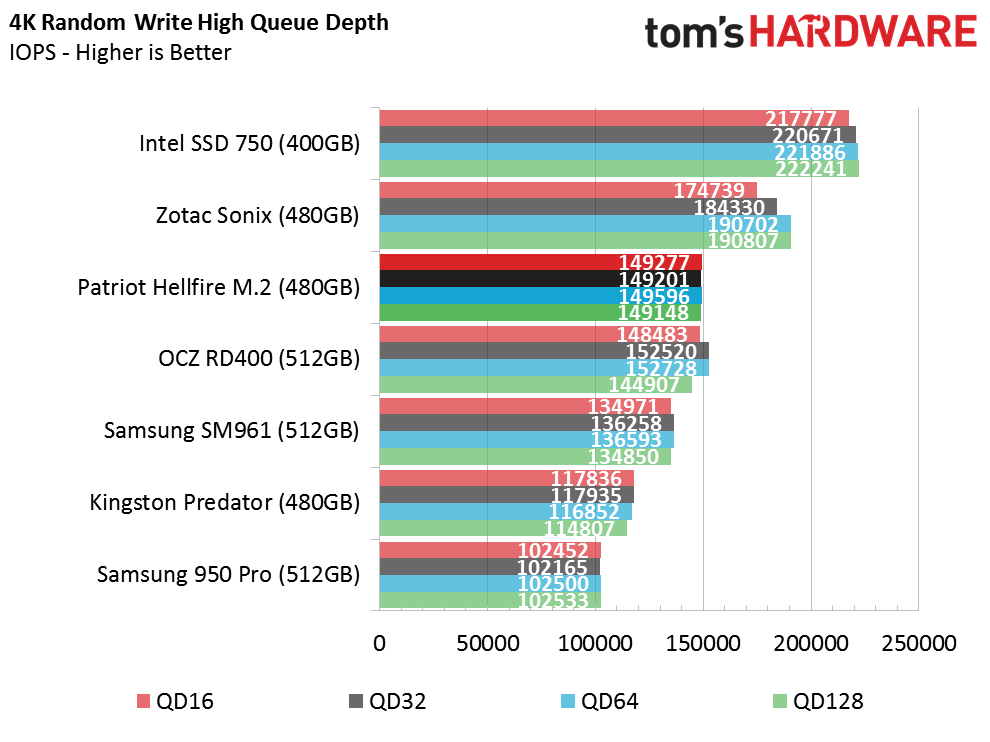
The Hellfire M.2 trails many of the other products during the low QD random write test, but many of the drives cluster together with 40,000 to 50,000 IOPS at QD1.
Get Tom's Hardware's best news and in-depth reviews, straight to your inbox.
80 Percent Sequential Mixed Workload
We describe our mixed workload testing in detail here, and describe our steady state tests here.
Phison has made exceptional progress with mixed workloads. The Hellfire M.2 480GB matches the Samsung 950 Pro 512GB at queue depth 2 and then runs away from all but the OCZ RD400 512GB in sequential mixed workloads with 80-percent reads. The chart reveals how much progress Phison has made since Zotac shipped the Sonix add-in card with release candidate firmware
80 Percent Random Mixed Workload
The mixed random workload results are just as impressive. The Hellfire M.2 leads the way through most of the test. Only the Samsung SM961 512GB is faster at low queue depths. This should lead to an improved user experience over previous E7 products and give us a measurable performance increase in real-world application workloads, too.
Sequential Steady-State
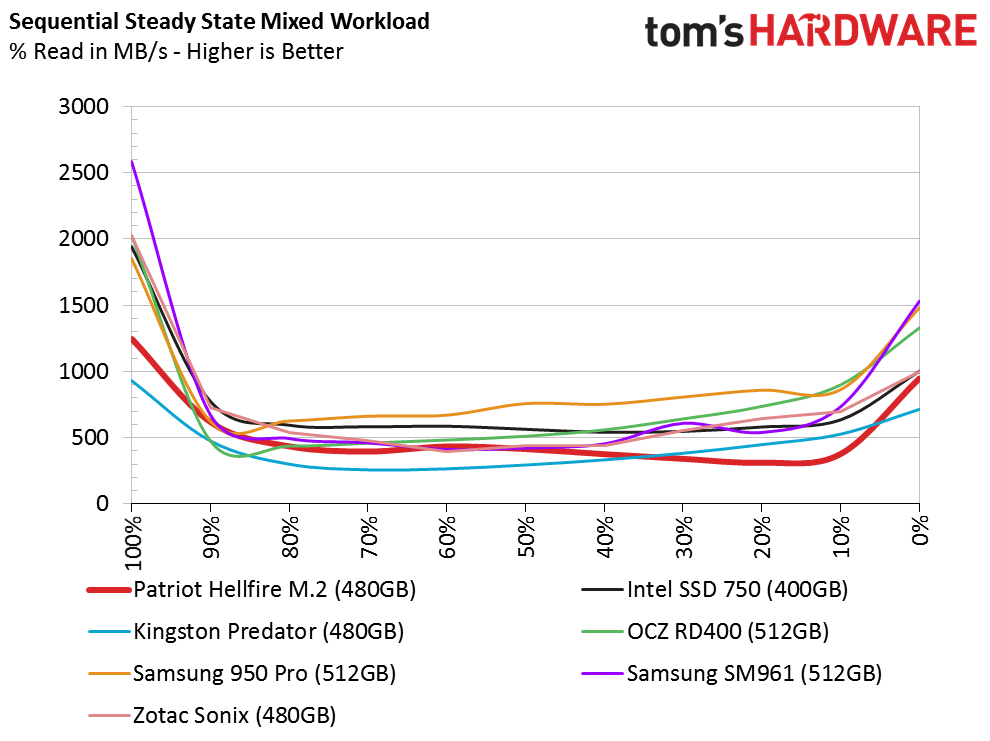
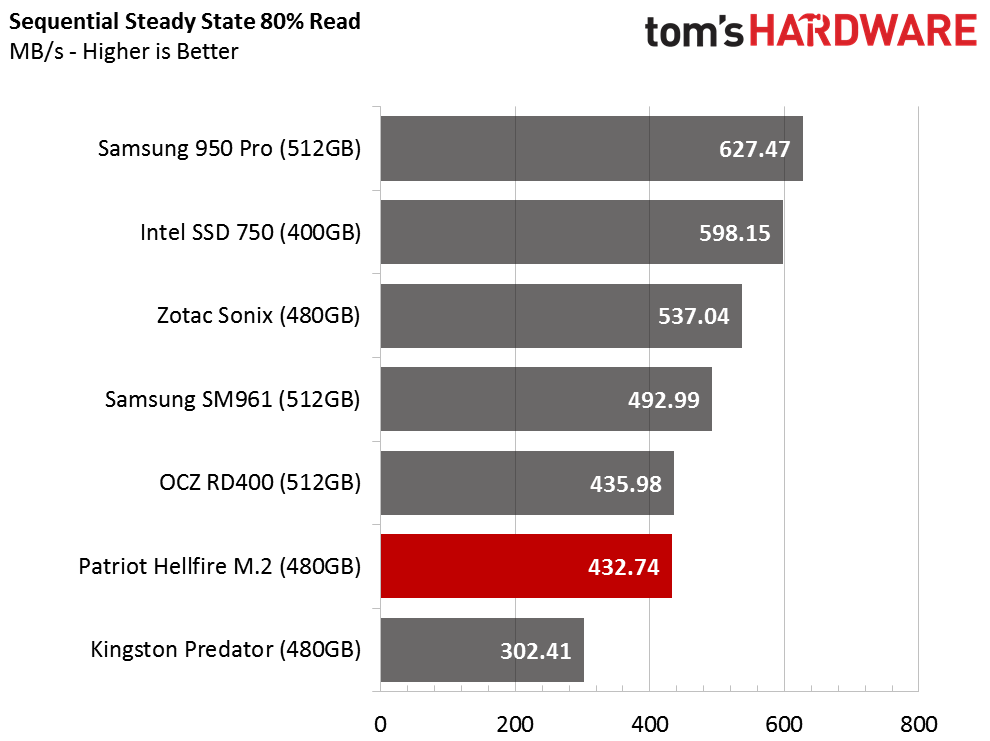
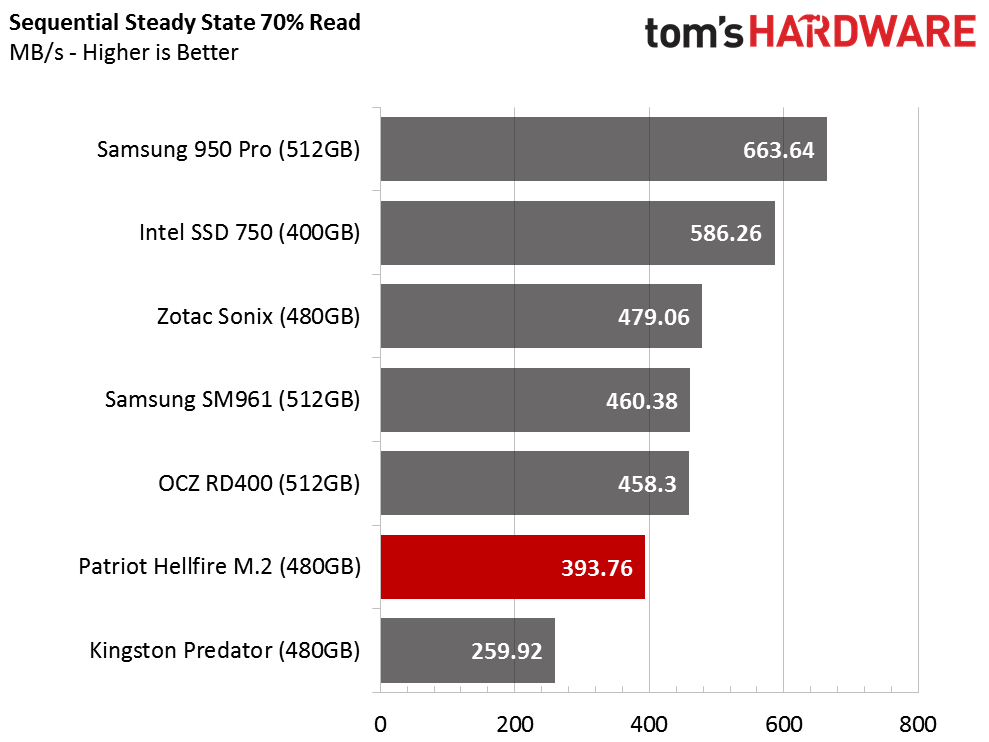
Patriot designed the Hellfire M.2 for gamers and power users, so most users will not push the drive down into steady state. Users with a lot of data on the drive will notice decreased performance, but it is an issue with all SSDs (and hard disk drives, but for different reasons). In this test, we see a significant difference between the Zotac Sonix and the Hellfire. We write to the test device for several hours with 128KB sequential data to achieve a steady state. The Sonix has a heatsink, and the Hellfire doesn't. I believe the results indicate the different thermal throttling states with the two products.
Random Steady-State

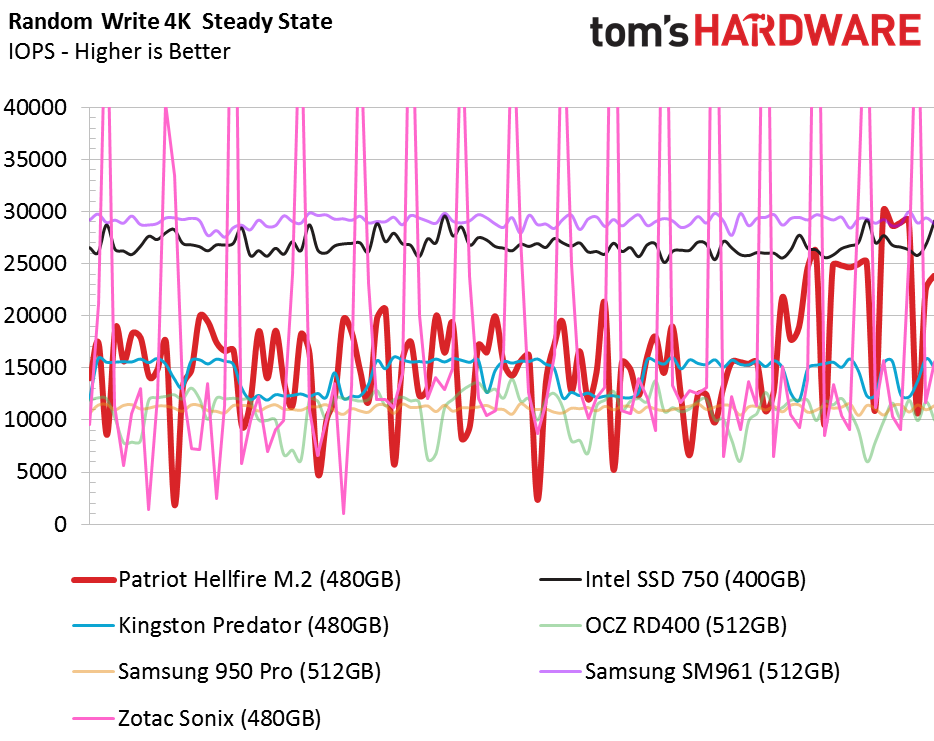
The random write steady-state test also highlights the wide gap between the two E7-powered SSDs. I believe the new firmware increases the Hellfire's base performance, but thermal throttling has removed many of the high peaks from the chart.
PCMark 8 Real-World Software Performance
For details on our real-world software performance testing, please click here.
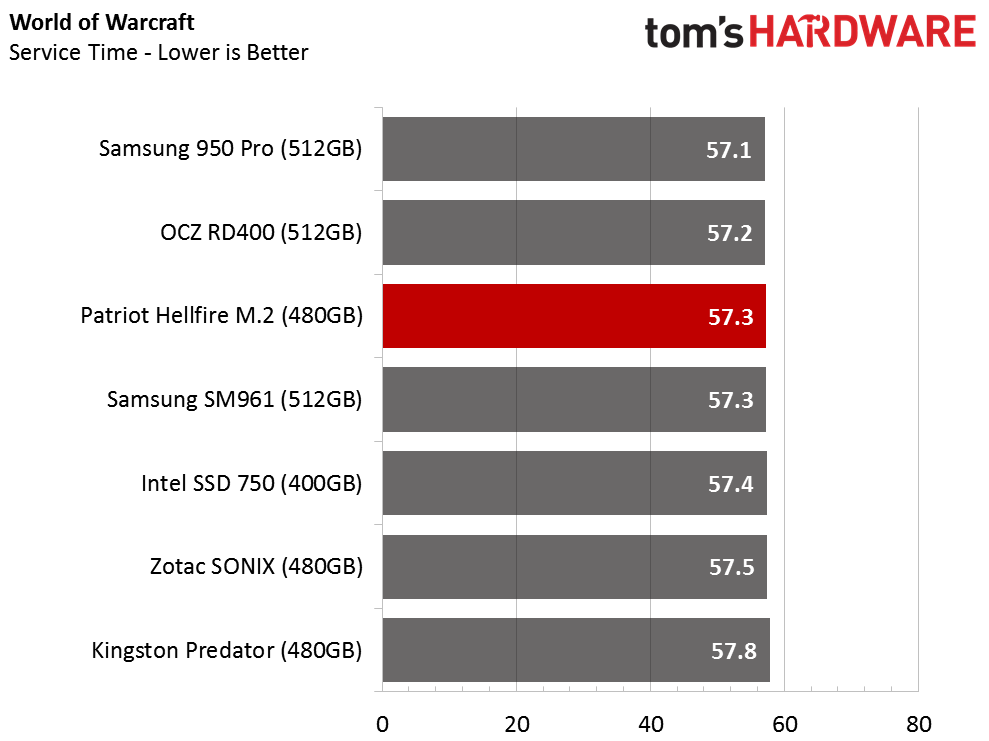
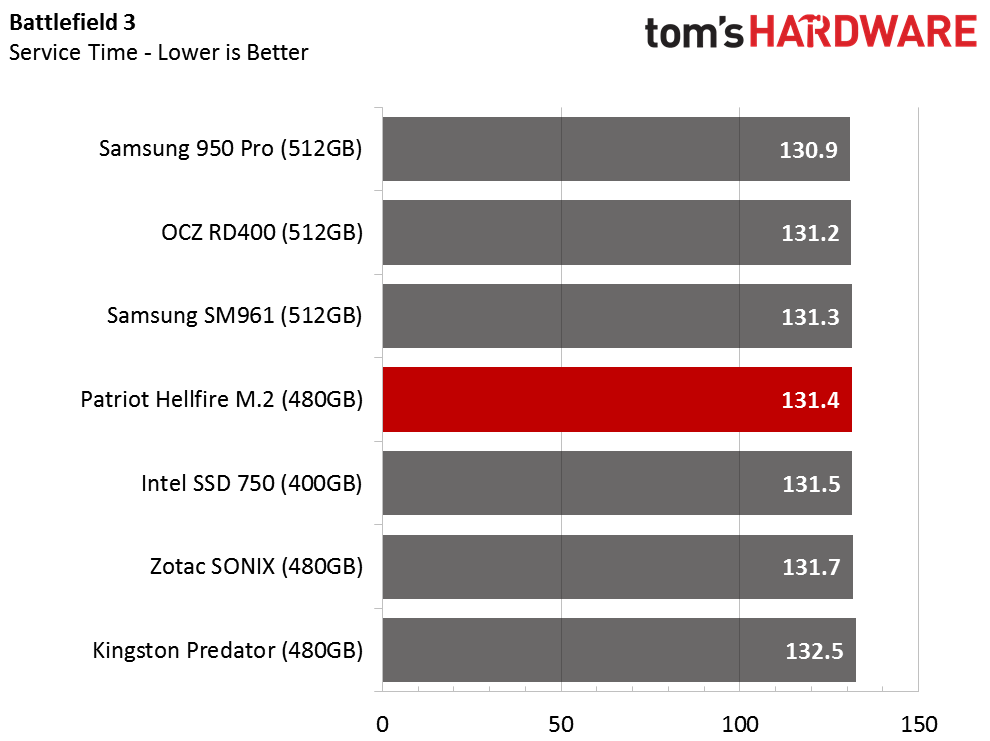


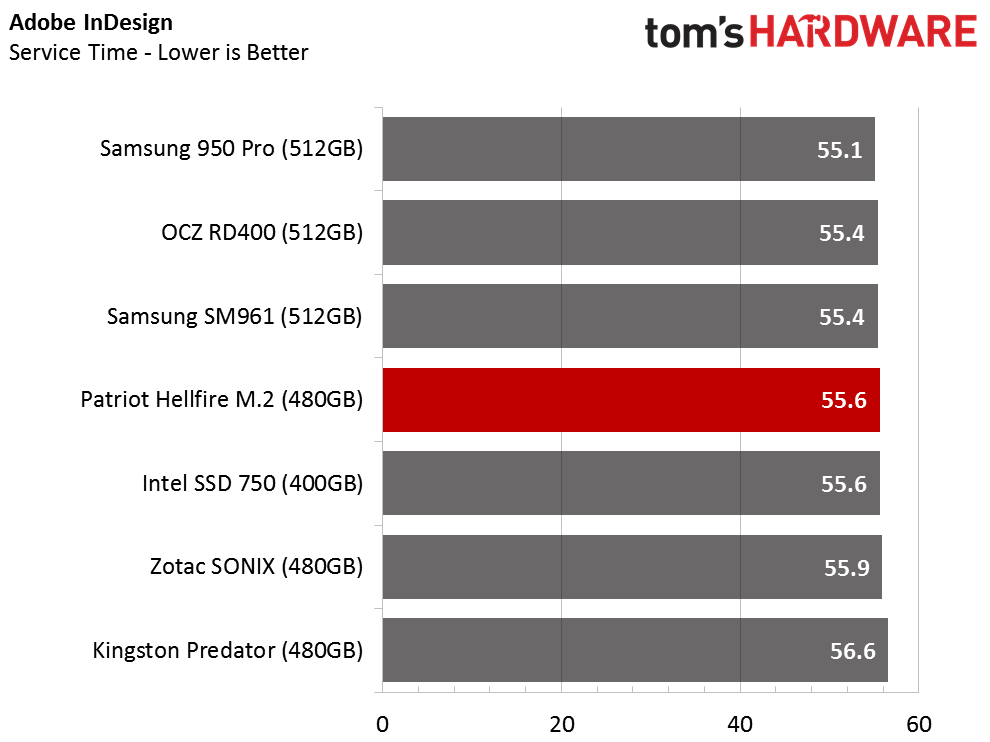
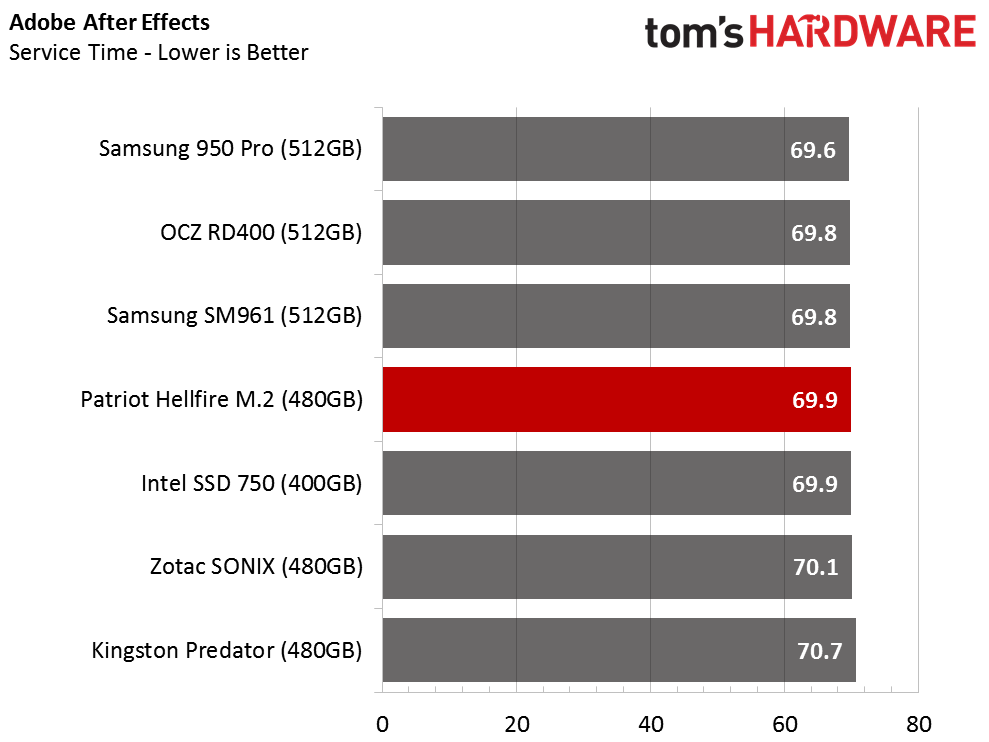
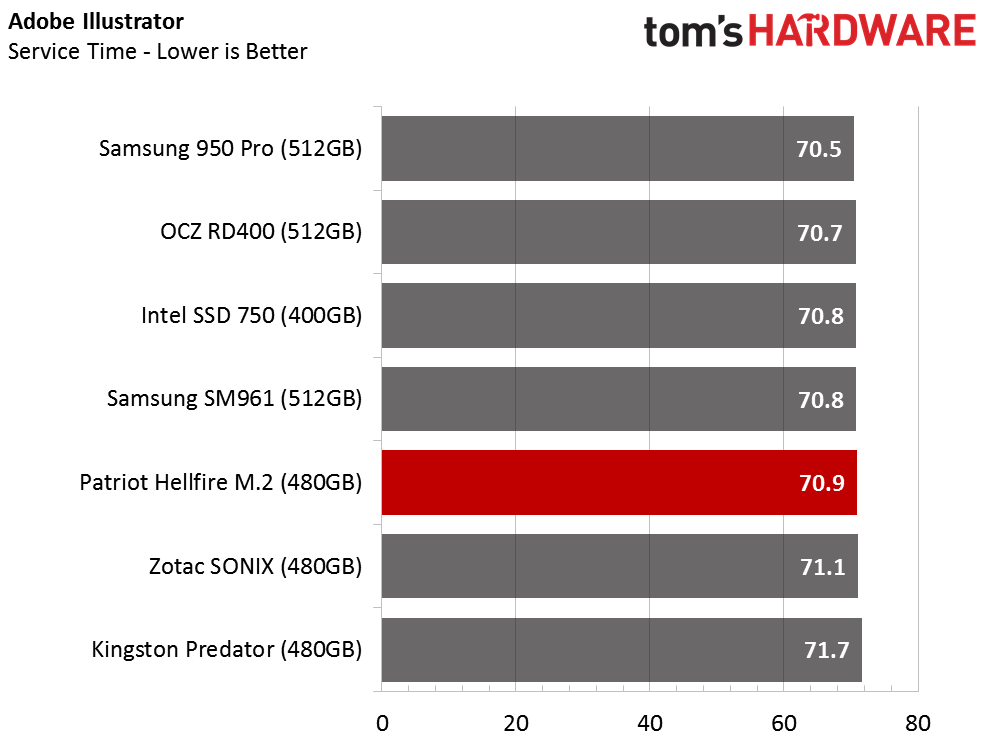
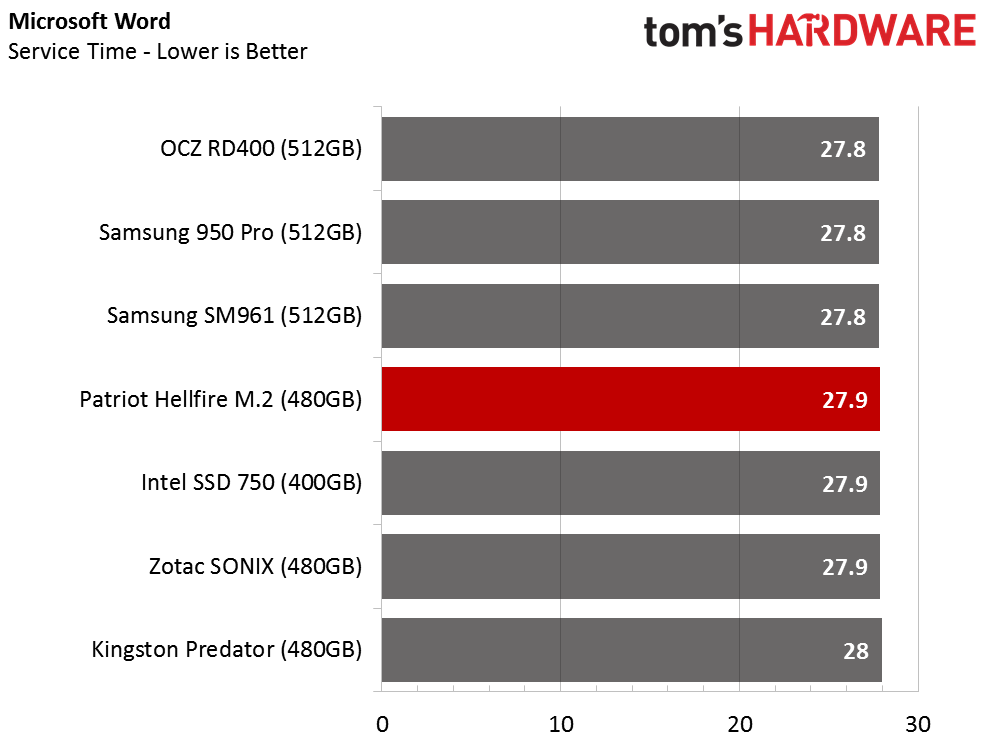
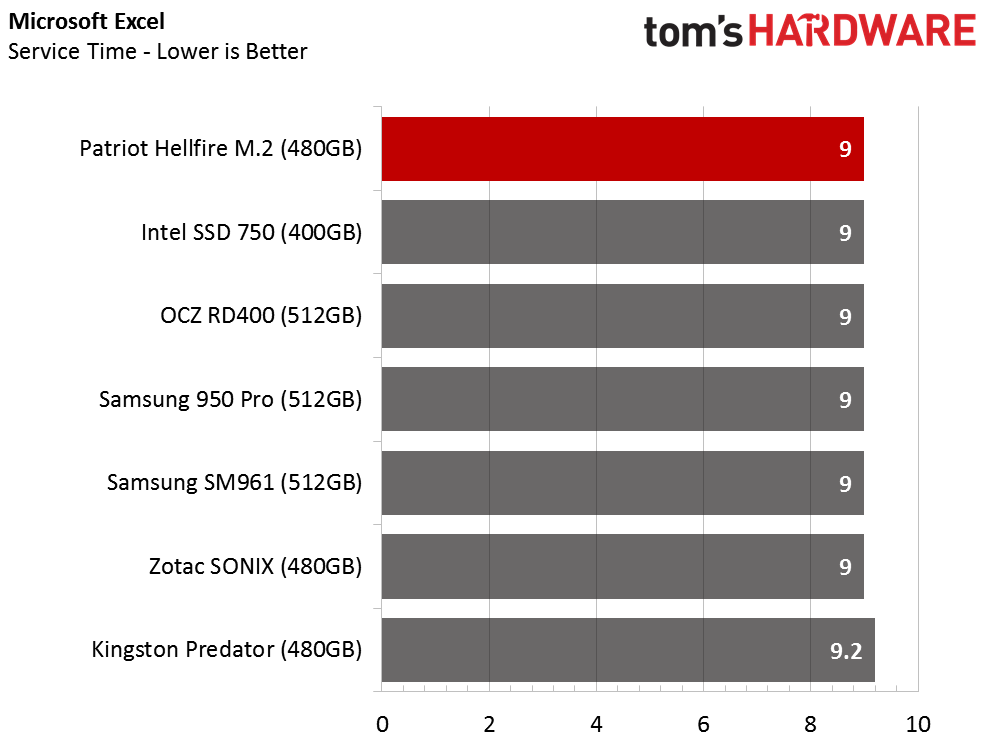

The real-world applications tests show that the Patriot Hellfire M.2 manages to hang with the fastest consumer SSDs in the world. The drive gets it done! The performance is much higher than any SATA SSD. Phison's improved firmware tuning, which increases the mixed random performance, shines through in these tests. We see a performance increase over the Sonix NVMe SSD in most applications.
Application Storage Bandwidth
In this chart, we average the test results and display them as throughput. The M.2 E7 SSD delivers 70 MB/s more performance than the Sonix add-in card version, but the difference is really in the improved firmware, and not the form factor. The Hellfire is still slower than the Samsung 950 Pro and OCZ RD400, but it should cost much less after the new-to-market tax subsides.
PCMark 8 Advanced Workload Performance
To learn how we test advanced workload performance, please click here.
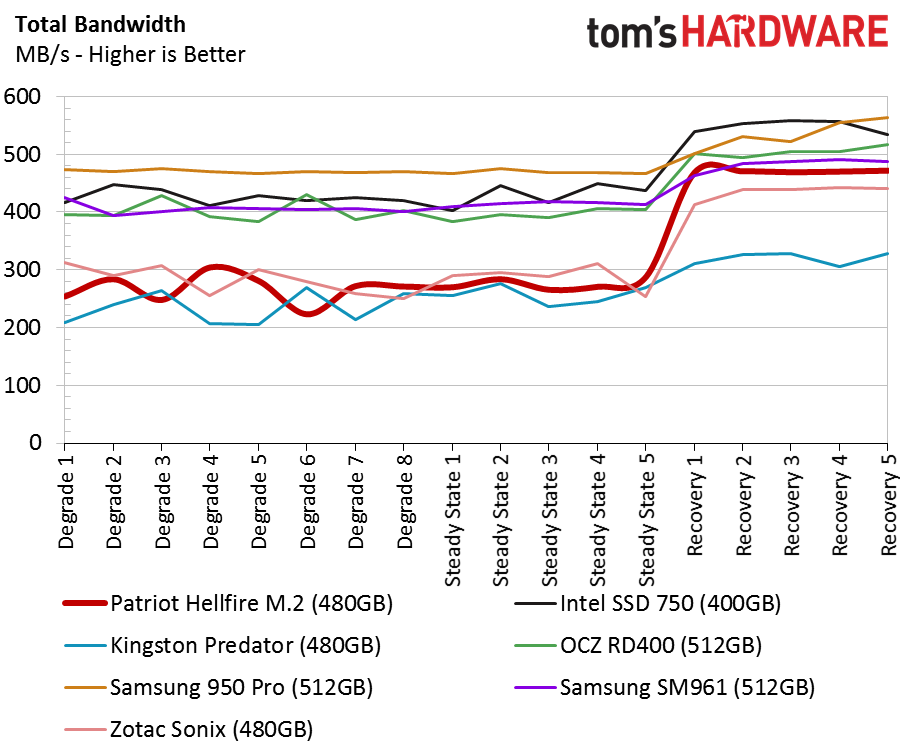
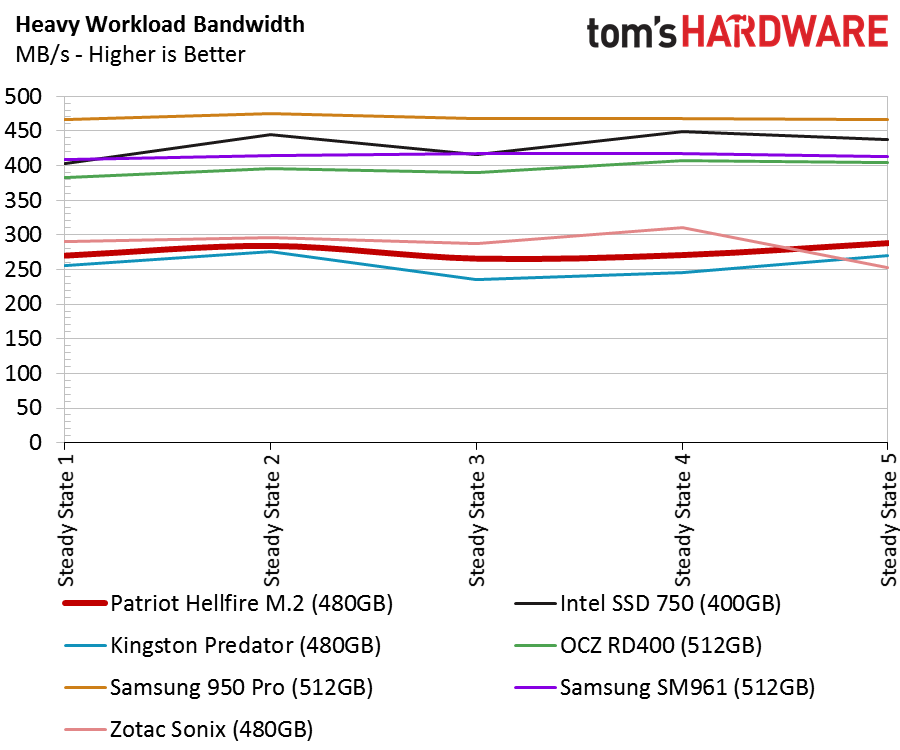
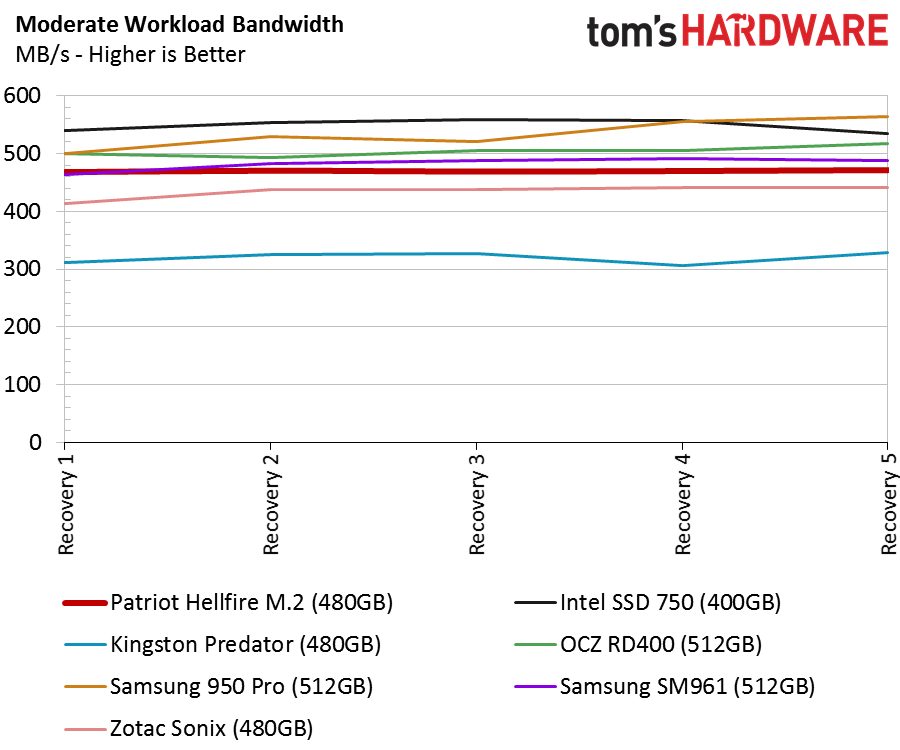
The Hellfire M.2 SSD falls into the second-tier cluster of products when the drive is full. The moderate workload section of the test provides the drives with ample time to recover from full dirty cells, which allows the Hellfire to increase performance thanks to the overprovisioned area. The drive delivers nearly identical performance to the Samsung SM961 in this portion of the 24-hour test.
Total Service Time
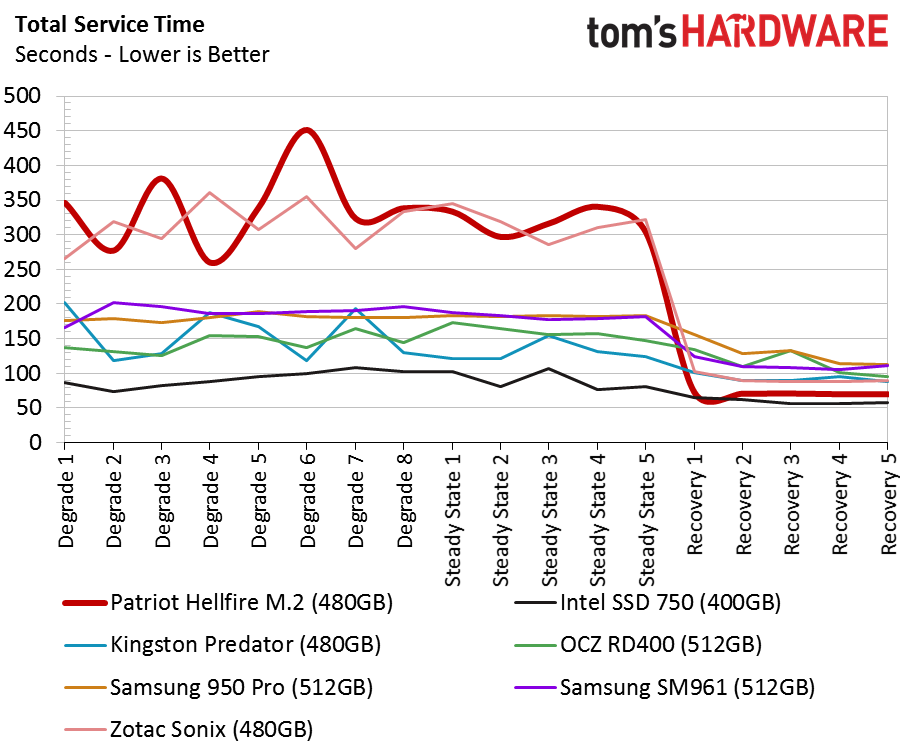


During heavy workloads, the service time for both Phison E7-powered SSDs is very high. Phison's focus has been to deliver a consumer version of the E7 before tackling an enterprise model. As the enterprise drive progresses, we may see better heavy workload performance with newer firmware revisions. The Hellfire performs much better as the workload lightens. The only SSD on the chart with better service times is the Intel SSD 750 400GB.
Disk Busy Time
Disk busy time is another way to measure efficiency, and sadly, Phison went the other way since the Zotac Sonix during heavy workloads. We notice abysmal performance under very heavy use. Once the workload lightens, we see the Hellfire M.2 perform very well, and it only trails the Intel SSD 750 400GB.
Notebook Battery Life

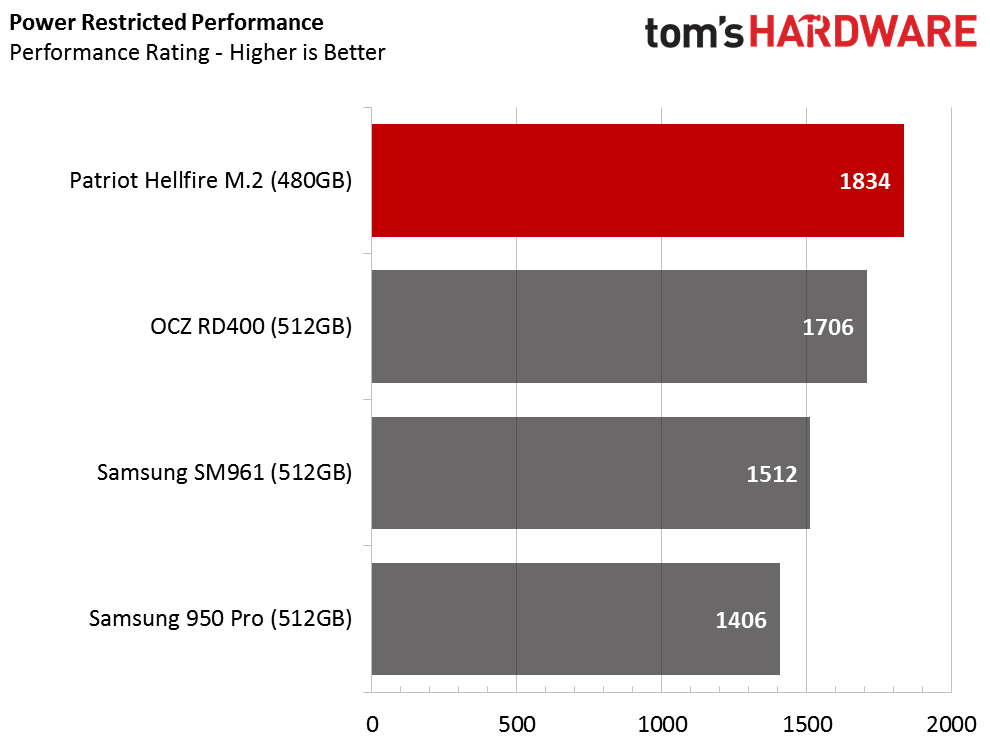
Wow, we didn't see that coming! It looks like someone over at Phison forgot to run the power optimization script and integrate it into the firmware. Without return-to-idle and other power reduction code in place, the Hellfire M.2 easily passes the other M.2 NVMe SSDs in performance under battery power, but battery life is shockingly bad.
Users can enjoy the high performance on battery power while running to find a wall outlet.

Chris Ramseyer was a senior contributing editor for Tom's Hardware. He tested and reviewed consumer storage.
-
Ergosum Prices are so stubbornly high for PCIe storage! Is it an issue of not wanting to kill the SATA3 golden goose? Given the enclosure requirements of a SATA drive, you'd think that production costs would be significantly lower.Reply
Changing the subject a little, I've been very surprised at the dearth of reviews on the Intel 600p (at the time of this posting there is only one, from pcper). I hope we can get this review, and maybe an update to the best for your money article for storage. Thanks! -
joex444 > The Hellfire M.2 480GB matches the Samsung 950 Pro 512GB at queue depth 2 and then runs away from all but the Intel SSD 750 400GB in sequential mixed workloads with 80-percent reads.Reply
Intel -> OCZ, since it's the green line not the black one. Or the chart is incorrect. -
Brian_R170 "The Hellfire M.2 joins the Intel 600p as a new wave of low-cost NVMe SSDs make their way to market."Reply
The "low-cost" 512GB Hellfire M.2 MSRP is $319.99 compared to the "expensivie" 512GB Samsung 950 Pro MSRP of $349. Is an 8.6% difference in MSRP really considered some other low-cost tier or is this comment purely based on wishful thinking that the device will have a $270 price some time in the future?
The Intel 600p doesn't seem like any type of performance king, but at least there's a significant cost savings compared to a $318 street price of the 950 Pro. I bought the 512GB for $190 the day it came out and I saw it today on Newegg marketplace for $174. -
razor512 It is pretty much price gouging, as the production cost for these NVMe devices is lower than that of SATA.Reply -
CRamseyer Let me give you guys a few updates. First let's cover Hellfire. Patriot gets a new firmware around the 16th. The firmware takes this series up to 2.1. We tested with 2.0. I've seen the numbers from 2.1 and it looks really good. We are going to save the Hellfire 240GB for the update and retest the 480GB drive in this review. YOu may ask why we didn't do that to start with. The answer is we didn't know when we started the review or scheduled it.Reply
The Intel 600p is in our lab. We have both the 256GB and 512GB. I'm finished with testing and the review will be on the site before the end of the month.
Prior to the Intel going live we will publish the Samsung PM961 as a preview of the 960 EVO. Samsung brings so much to the table that we really need to see what the 960 EVO will lay down before judging any of the other low-cost NVMe products.
Back to the Hellfire and pricing. MSRPs are made to be broken! There is no way the Hellfire can sustain it's current pricing with the Intel 600p and 960 EVO that may come next month.
Look for a 512GB class NVMe showdown early next week with all of the drives you want to see compared. -
josejones SATA is obsolete now - get it off my new Z270 motherboard as I don't want to keep paying for old obsolete crap I don't want and will never use. SATA is now like VGA and that took like 10 years to get rid of.Reply
Also, NVMe 1.2 is bottom of the barrel - we want nothing less than NVMe 1.4. -
Paul Alcorn Reply18566622 said:Prices are so stubbornly high for PCIe storage! Is it an issue of not wanting to kill the SATA3 golden goose? Given the enclosure requirements of a SATA drive, you'd think that production costs would be significantly lower.
Good point. SATA is the moneymaker, volume is higher. The latest Trendfocus report pegs SATA at 78 percent of the client SSD market. -
ozonefree I hate and loath the name "Hellfire." That's an air-to-ground missile used to blow things up. Better they should have named it the Titantic or Charge of the Light Brigade...Reply -
CRamseyer That was a perfect setup comment to rub Paul.Reply
The Army just announced a change to the Hellfire name. It is now called a Note 7.
